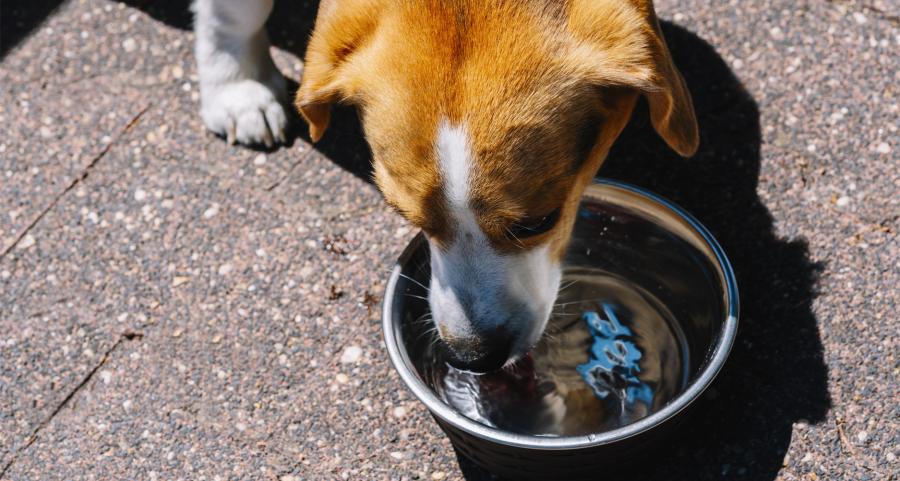What to Know About Pet Hydration

Just like with people, proper hydration is critical to keep pets healthy.
The Importance of Water for Pets
Water is the main component of healthy, living cells in your pet's body. And while human bodies are about 60% water, your pet's body is 80% water!
The purpose of water is to carry and move important nutrients into and out of cells. It aids in the digestion of food, is needed for healthy muscles and joints, and naturally removes waste from the body.
Keeping your pets hydrated will also serve to cool their body down and help them maintain normal body temperature. Every important body function requires water and without the right amount, your pet can become dehydrated and ill very quickly.
Both cats and dogs, on average, need about one ounce of water per pound of their body weight daily. Birds need to drink enough water to make up 5% of their body weight to replace the water lost from bodily functions. Besides these general guidelines, more water may be necessary depending on the environmental temperatures and amount of exercise your pet gets.
Just as bad as a lack of water is a lack of clean water. It is important to have fresh, clean water available to your pet at all times. You can count on Cleveland Water to deliver clean, high-quality tap water that's safe for you, your family, and your pets.
How to Keep Your Pet Hydrated
- Know how much water your pet needs. Generally, cats and dogs need about an ounce of water per pound of their body weight daily. So check how much your pet weighs occasionally for a baseline.
- Know the signs of dehydration. These include vomiting, loss of energy, excessive panting, loss of appetite, dry gums and eyes, loss of skin elasticity.
- Have plenty of fresh water available. Check your pet’s water bowl often and refill as needed; whether there’s none left or there’s debris in the water. Try using a bowl that’s not easily knocked over and easy to get to, dogs especially are notorious for spilling their water.
- Bring water with you. If you often take your pet on long walks, car rides, or other outdoor activities, have a water bottle for yourself and water and a travel bowl for your pet. Take a few breaks to offer water. If you’re thirsty, chances are your pet is too.
- Add water to your pet’s food. Humans can get a lot of water from the foods that we eat. Pet food, however, isn’t especially high in water content. If you begin thinking your pet might not be getting enough water from drinking alone, try adding a little water to the dry kibble or start using more wet food.
